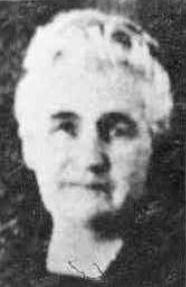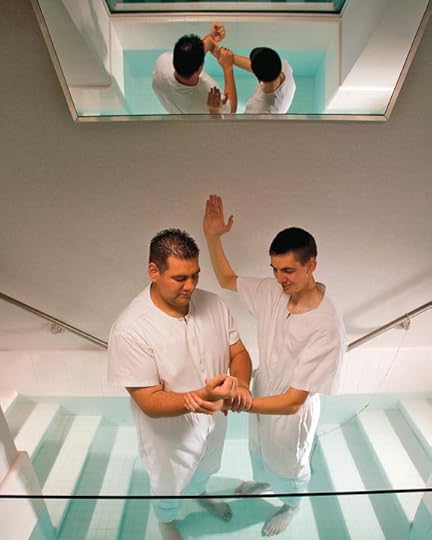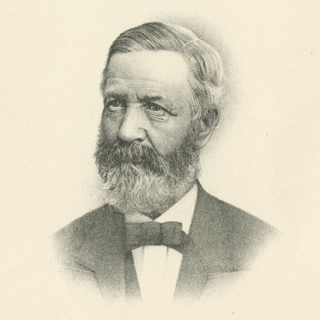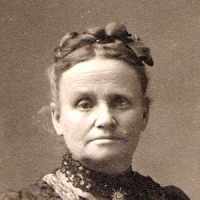Dan Barker's Blog, page 6
October 19, 2019
Prior to Melvin Ballard’s Birth
 http://www.styleinspirationanddesign....
http://www.styleinspirationanddesign....Prior to Melvin Ballard’s birth, his mother, Margaret Ballard, heard a voice. What did the voice tell her?a. Her son would become an apostle in the Churchb. Her son would become a great scholarc. Her son would serve many missionsd. She would have a sonYesterday’s answer:A Keturah’s nursing baby started singingFrom the life of Keturah Eliza Button Andrews: Keturah and her husband, Charles, were blessed with three daughters born in New York before they moved to Kirtland, Ohio. In Kirtland, they were converted to the Church of Jesus Christ of Latter-day Saints. They later moved to Nauvoo, Illinois, with the main body of the Church when they were driven from their home. In 1846, they were again driven from their home in Nauvoo. At the time they were leaving, Nauvoo, her husband was in charge of a group of Saints that had camped in Iowa. They became surrounded by a large band of men who inquired for their leader. Charles stepped forward to answer. The mob told him to prepare his group to prepare to be gunned down. Charles did so, but asked if he could sing a song first, and sang all seven verses of “A Poor Wayfaring Man of Grief.” He sang another song and then another. During the third song, Keturah was nursing her youngest child. The child suddenly stopped sucking and began to sing along with its father. The leader was so stunned that a nursing child would do such a thing and that one so young could sing, he lowered his gun and told his men to depart and leave the Mormons in peace.The family had bought a pan of potato sprouts and planted them. After they were harvested, Keturah, cleaned them, and after they were cooked she added plenty of water and thickened it with bran. They all sat down and ate to their heart’s content, and for the first time since coming to Utah, they had all they wanted to eat.Keturah was blessed with the ability to “speak in tongues.” Although her ancestry has no Native American in it, she often fed the Indians when they came by, and her children have written of them being amazed at her ability to sit with them under a tree outside their house, and talk with them in their native tongue. International Society Daughters of Utah Pioneers, Pioneer Women of Faith and Fortitude, (Publishers Press, 1998), 1: 91.
Published on October 19, 2019 03:30
October 18, 2019
To The Shock of the Mob
 https://thenerdsuncanny.files.wordpre...
https://thenerdsuncanny.files.wordpre...As a group of Saints being led across Iowa by Keturah Eliza Button Andrews husband, a mob stopped and surrounded them. The mob leader told Keturah’s husband to prepare his group to be shot. Charles, Keturah’s husband started to sing, when something happened that caused the mob to leave the group of Saints in peace. What happened?a. Keturah’s nursing baby started singingb. The mob saw the Three Nephitesc. Natives surrounded the mobbersd. Angels with swords in hand stood between the mob and the SaintsYesterday’s answer:C Traveling on the Mormon TrailFrom the life of Betsy Lowe Allen: Betsy’s parents had come from Scotland in 1855, and were working their way towards Utah. They were living in Illinois when Betsy was born. They tied Betsy to a chest that was strapped to the side of the wagon, and the other five children walked beside the wagon and kept Betsy entertained. They continued their journey and reached Utah in 1861.International Society Daughters of Utah Pioneers, Pioneer Women of Faith and Fortitude, (Publishers Press, 1998), 1:35.
Published on October 18, 2019 03:30
October 17, 2019
Tied to the Wagon
 Betsey Lowe Allenhttps://images.findagrave.com/photos/...
Betsey Lowe Allenhttps://images.findagrave.com/photos/...What situation caused Betsy Lowe Allen’s parents to tie her to a chest mounted on a wagon?a. Traveling to and from churchb. Traveling to and from schoolc. Traveling on the Mormon Traild. Traveling to and from the templeYesterday’s answer:B Chicken eggs gathered on Sunday and donated for temple constructionEach Stake in the newly drawn temple districts was levied a “large appropriation” or assessment by Church headquarters, to be paid in cash or by contributions-in-kind. Each adult was asked to donate fifty cents monthly, and this at a time when bread cost four cents a loaf and a common laborer’s wages in New York were ninety cents a day. As seen in table 1, the kinds of donations were long and varied, with everything from potatoes, cabbage, and dried apples to quilts, coffee, tobacco, and blacksmithing services. Apostle Lorenzo Snow even advised the sisters to devote the proceeds of the sale of their “Sunday eggs” to the construction effort. . . .The construction of these temples, each at a minimum cost of approximately $500,000“Which is the Wisest Course,” The Transformation in Mormon Temple Consciousness, 1870-1898. Richard E. Bennett, BYU Studies Vol. 52, No. 2, 2013, 28-29.
Published on October 17, 2019 03:30
October 16, 2019
Sunday Eggs
 http://2.bp.blogspot.com/-pY0OJLgk5H8...
http://2.bp.blogspot.com/-pY0OJLgk5H8...What were Sunday Eggs?a. Chicken eggs gathered and eaten on Sundayb. Chicken eggs gathered and donated on Sunday for temple constructionc. Chicken eggs gathered and donated on Sunday for the poord. Chicken eggs gathered and donated on Sunday for the missionary fundYesterday’s answer:D Wilford WoodruffMore than any other person, Wilford Woodruff must be credited as the architect of modern Mormon temple work, with its emphasis on recurring temple attendance to perform not only baptisms for the dead but also the much longer and more involved ordinance of endowments for the dead. Whereas previously one received his or her own living endowment once and for all, now the faithful would be called upon to return to the temple over and over again to perform that ordinance vicariously for their departed loved ones and friends. In 1877 Wilford Woodruff proclaimed a vision while in St. George of the founding fathers of America and other world leaders and initiated on their behalf the ordinance of endowments for the dead. It was in St. George that hundreds of his family and friends, including his long deceased mother, were likewise blessed. It was in St. George that President Woodruff also began wearing pure white doeskin temple clothing in representation of the purity of temple worship, there by setting a standard of dress for later generations to follow. And it was in St. George that congregations of temple. “companies” began to “go through the temple” for scores, if not hundreds, of deceased, all at one time. As one temple worker, Alonzo Raleigh, described it, “Engaged all day and evening with President Woodruff, [John D. T.] McAllister, and [L. John] Nuttall under the direction of President B. Young in reorganizing parts of the endowment. . . . At work in the endowments. 136 persons were passed through. The house was tolerably crowded, though we got through in good season, having two vails to work at which doubles the capacity of the house in that respect, a thing not practiced before as far as we have any knowledge.”“Which is the Wisest Course,” The Transformation in Mormon Temple Consciousness, 1870-1898. Richard E. Bennett, BYU Studies Vol. 52, No. 2, 2013, 21.
Published on October 16, 2019 03:30
October 15, 2019
“The Architect of Modern Temple Work”
 https://www.ldstemple.pics/wp-content...
https://www.ldstemple.pics/wp-content...Which prophet is considered the “Architect of Modern Temple Work?”a. David O. McKayb. Brigham Youngc. Lorenzo Snowd. Wilford WoodruffYesterday’s answer:B. They were to non-membersFrom the life of Rebecca Neibaur Nibley: Rebecca was present and stood near Pres. Brigham Young when he drove the last spike in the Utah Central Railroad in Salt Lake City, Jan. 10, 1870, she being in the capital on a visit from Brigham City. The girl was assisting her sister, Mrs. Morris Rosenbaum, at Brigham City, in the large boarding house which that thrifty Hebrew, Mr. Rosenbaum, kept for the men who were engaged in the final work on the railroads. There sat the men at boarding table such men as Collis P. Huntingdon, O. J. Salisbury, Col. Grey, Col. Hurd, with Governor Leland Stanford, and many others not so well known, but of local repute. The merry-voiced girl was popular with all the boarders, and on one occasion she received an offer of marriage, which was repeated at sundry and several occasions from one of the men just mentioned. But “Beck” Neibuar was a “Mormon,” first, last, and all the time. Her suitors offered her gold, houses, residence away from her people, etc., upon which the girl arose to her small height and announced her loyalty to her father, her faith, and her people. She was not again molested on that point. But Governor Stanford has marked well the swift-footed, capable, careful, baby-loving, prudent girl, and he entreated her on numerous occasions to accept a position in his family as companion to his children. He too painted rosy pictures of life away from her people and in the great world west of the Valley, but “Beck” had built her house upon the rock; and when the winds came and the storms of entreaty tried to batter down her citadel, her rooftree never shock, her knees never faltered. It might be threats, it might be coaxing, but the girl simply tossed them all aside as things of no moment. She was a “Mormon,” and she would marry one of her own people or no one. And when she was rallied by Gov. Stanford on the possibility of being the wife of a man who would take other wives, she answered decisively, “Sir, I would not marry a man who had not the courage of his convictions, and who would not enter into that celestial order of marriage.”Jenson, Andrew, LDS Biographical Encyclopedia (Salt Lake City: Andrew Jensen History Company, 1914), 2: 676-677.
Published on October 15, 2019 03:30
October 14, 2019
Turning Down the Marriage Proposals
 https://apis.xogrp.com/media-api/imag...
https://apis.xogrp.com/media-api/imag...Rebecca “Beck” Nibley had a number of opportunities of marriage throughout the 1870s but consistently turned them down, why?a. She didn’t want to be in a polygamous relationshipb. They were to non-membersc. They were to men that had not served missionsd. They were to studentsYesterday’s answer:A From the life of Joseph Hatten Carpenter: In March, 1886, he left England for West Australia in a sailing ship, round the Cape of Good Hope, and after visiting most of the Australian colonies he started for San Francisco. While on board the ship “Zealandia” he met two Mormon Elders, Wilson Ross Pratt and Wm. C. Mellor. After hearing the gospel as taught by them, he believed it and went direct to Salt Lake City, where he was baptized March 1, 1887, by James Leatham and settled in the 19th Ward.Jenson, Andrew, LDS Biographical Encyclopedia (Salt Lake City: Andrew Jensen History Company, 1914), 2: 562.
Published on October 14, 2019 03:30
October 13, 2019
Baptized Where?
 https://askgramps.org/files/2013/08/m...
https://askgramps.org/files/2013/08/m...Hearing the gospel taught to him on a ship sailing from Australia to San Francisco, John Hatten Carpenter was eventually baptized where?a. Salt Lake Cityb. San Franciscoc. Hawaiid. On the shipYesterday’s answer:C The Civil WarFrom the life of John Druce: In reference to emigrating to Utah: Says he: “It was a very critical time to travel through the States. The Civil War had just begun and the feeling against the saints was quite bitter. At Dunkirk, New York, the company was detained part of a day and all one night, none being allowed to leave the depot. At Quincy, Ill., men gathered about the train, swearing and uttering threats, but none were harmed. At Hannibal, Missouri, the train of cars was taken away by soldiers, in order to clear the road, the guerillas having set fire to the bridge over which the train must pass. None were allowed to leave the depot; all slept on the station floor.”Jenson, Andrew, LDS Biographical Encyclopedia (Salt Lake City: Andrew Jensen History Company, 1914), 2: 497.
Published on October 13, 2019 03:30
October 12, 2019
A Particularly Dangerous Time
 John Drucehttps://content.ldschurch.org/overlan...
John Drucehttps://content.ldschurch.org/overlan...Pioneer, John Druce stated that what was a dangerous time to be traveling to Zion?a. The Utah Warb. The War of 1812c. The Civil Ward. The Blackhawk WarYesterday’s answer:B Her ministerFrom the life of Magdalena Schneider Reiser: At the age of twenty, while visiting friends in Thun she first heard the true gospel of Jesus Christ expounded and became converted to it against the wishes of her parents and associates. When it was found that nothing could shake her faith in her religion, her minister of the old faith asked that she be refrained from associating with her former friends and leave her home town, or give up her religion. Never thinking that she would leave her home for any creed, the sorrow among her loved ones was great indeed, when she showed them that she chose the gospel before everything else. She spent four years in sorrowful banishment from her home, during which she frequently saved the Elders from bodily harm, and as she gave the greater part of her earnings to her invalid mother, she almost despaired of ever emigrating to Utah. But on a certain occasion in the fall of 1860, after walking 18 miles to meeting, one of the Elders, who knew of an invalid sister that needed a companion on the voyage to America, offered her the position. As her mother had recently died, Sister Magdalena gladly embraced the opportunity and after a rough voyage across the North Sea, she reached England, and thence crossed the Atlantic in the ship “Underwriter.” She walked all the way from Florence to G. S. L. Valley, traveling with an ox train. While on the plains she narrowly escaped death by Indians. Driving a cow and falling a short distance behind the rest of the company, she fell asleep while resting in the shade of a tree and on awaking she found that the rest of the company had gone out of sight. She prayed earnestly to the Lord and her prayer was answered by one of the brethren coming back to look for her. A few minutes after they had joined the company four or five Indians were seen galloping along the trail and they stopped at the very point where she had been lagging behind. She always after that felt that her life had been spared so that she might devote it to the benefit of her fellow man and to serve the Lord.Jenson, Andrew, LDS Biographical Encyclopedia (Salt Lake City: Andrew Jensen History Company, 1914), 2: 426-427.
Published on October 12, 2019 03:30
October 11, 2019
A Bit of a Walk
 http://www.veininstitutect.com/wp-con...
http://www.veininstitutect.com/wp-con...Who suggested to Magdalena Schneider Rieser that she leave the town she was living in when it was discovered she was studying with the Elders from the Church of Jesus Christ of Latter-day Saints?a. The mayorb. Her ministerc. Her parentsd. The eldersYesterday’s answer:C Cracked his whip at themAnnie Kershaw remembered that in 1865, she and a group of children found a grove of “potawatomi plum” trees and stopped to feast on their find. They were about a mile behind the company when the company captain, William Willis, rode back on his horse. Willis then drove the children ahead of him, cracking his “black snake whip at us, and I tell you we never strayed behind again.”Violence and Disruptive Behavior on the Difficult Trail to Utah, 1847-1868, David L. Clark (BYU Studies, Vol. 53, Number 4, 2014), 98.
Published on October 11, 2019 03:30
October 10, 2019
Instilling Fear
 Annie Kershawhttps://content.ldschurch.org/overlan...
Annie Kershawhttps://content.ldschurch.org/overlan...Annie Kershaw recollected that she and some other children found a plum tree while traveling on the Mormon trail and lagged behind the remainder of the group to enjoy the fruit. What did their Company Captain do to scare them back with the remainder of the group?a. Sent Indians to scare themb. Dressed up as an indianc. Cracked his whip at themd. Shot his gun over their headsYesterday’s answer:D Spencer W. KimballFrom the life of Russell Marion Nelson: Surprisingly, several years later, in 1972, Dr. Nelson performed that very same operation on President Kimball. Again, Elder Nelson received a strong witness of the power of the priesthood. He said that in a blessing given by President Harold B. Lee preceding the operation, “I was promised that the operation would be performed without error, that all would go well, and that I need not fear for my own inadequacies, for I had been raised up by the Lord to perform this operation.” At the conclusion of the surgery another powerful testimony came to Elder Nelson: “I had a sure witness as I was standing there that the man I had just operated on world become the President of the Church!” Elder Nelson was surprised by this revelation because Joseph Fielding Smith was president of the Church, and Harold B. Lee, next in line, was a much younger and apparently more healthy man that President Kimball. After seven years as stake president, eight years as general Sunday School president, and five years as a regional representative, Russell M. Nelson was called to the Twelve in April 1984.Flake, Lawrence R., Prophets and Apostles of the Last Dispensation, (Provo, Utah: Religious Study Center, Brigham Young University, 2001), 531-532.
Published on October 10, 2019 03:30



